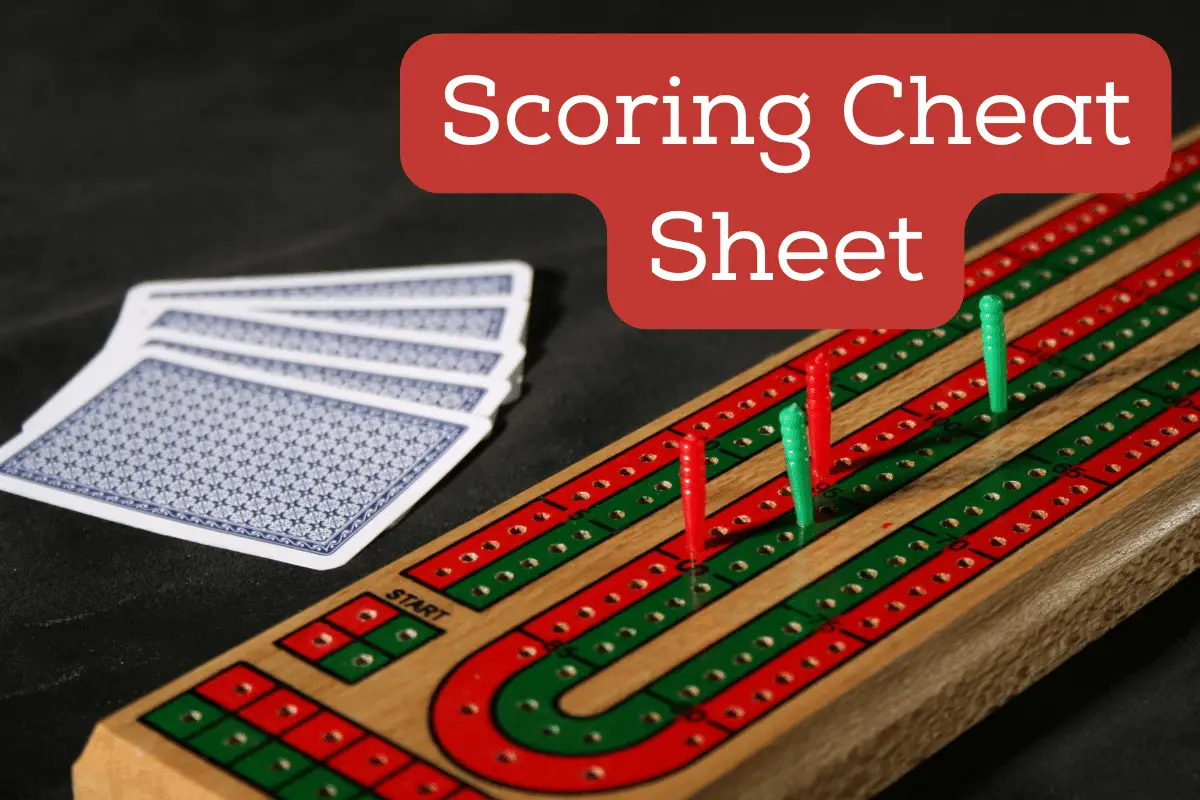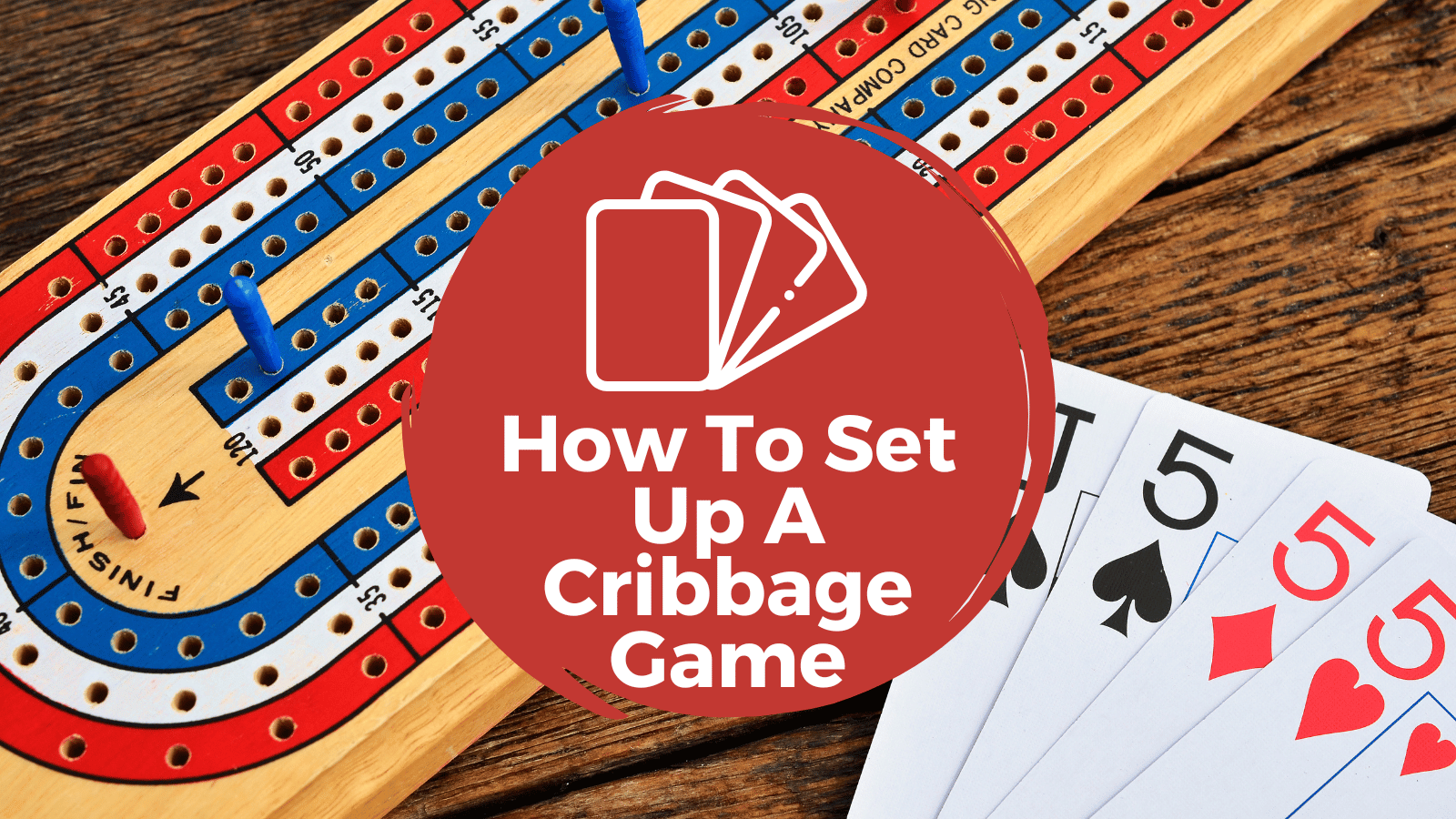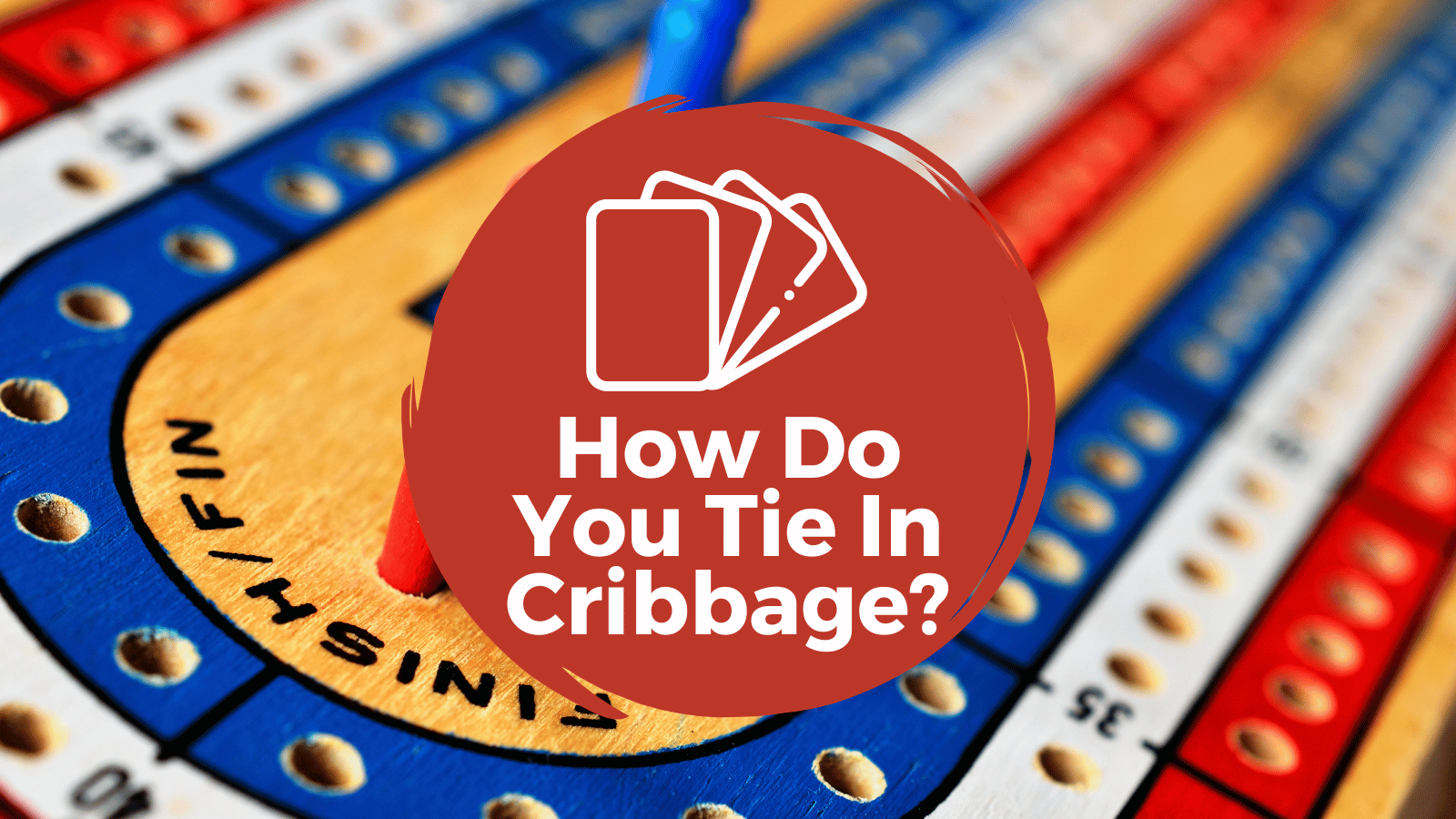One of the hardest parts of learning cribbage is the scoring.
It’s so different from what normal games use for points, so it’s not surprising.
I’m often asked if there’s a printable cribbage scoring cheat sheet out there for download.
To be honest, I couldn’t find many in my searches (and I didn’t like the ones I did).
So I made my own!
It’s simple but effective with one side featuring the common scoring steps of the game and the other showing the flow of the game.
Read on for those details.

Check out our comprehensive guide on the rules of cribbage and how to play with examples, scoring breakdowns, and vocabulary guide.
Table of Contents
Printable Cribbage Scoring Cheat Sheet Download
Cribbage Scoring Explained In Brief
For a bit more details into scoring a quick cheat sheet can’t cover, here are some thoughts that may help you.
Or if you prefer video, here’s my YouTube video on the topic:
Fifteens
In cribbage, any time you can add points up to 15 points with any number of cards, you get two points.
Whether this happens with a 10 and a 5 or an Ace-2-4-8 doesn’t matter.
As long as we get up to 15 points, it’s worth two points.
During the play (or pegging), the 15 needs to be hit during the counting up.
So if the pone or other players starts with a 10 and you play a 5 for 15 total, you get two points.
But if the other player plays a 10 for 18 total and you play a 5 after that for 23, then you don’t get the points even though 10+5 equals 15. It doesn’t count this way during the play.
Remember, face cards are all worth 10 and Aces are worth 1.
Pairs
Pairs or matches are any time the face value of the card is the same. In your hand, if you have two 2’s, that’s a pair and it’s worth two points.
A King and a Queen don’t count as a pair even though they are both worth a numerical value of 10.
Three of a kind is called a royal pair or pair royal. It’s worth 6 points.
Four of a kind is worth 12 points because it’s made up of 6 total pairs.
Read more about this in my article on pair royal in cribbage.
Pairs are fair game for counting during the play or pegging phase.
Need a Cribbage board to get started?
Check out this classic one here!
Runs
Runs are when you have cards in consecutive order. You need to have at least three in a row for it to count, and a run is worth how many cards are in the run.
For example, a run of 3-4-5 is worth three points, but a run of 9-10-J-Q-K is worth five points.
Remember, Aces are low and Kings are high. Kings and Aces cannot be looped together to make a run.
Runs are also fair game for counting during the pegging phase of the game.
Flush
A flush is when you have four cards of the same suit in your hand. It’s typically worth four points.
The starter card may be added to your flush for a total of five points, but it can’t be used to replace a card in your hand to make a flush.
In other words, if you have a 2 of clubs, 4 of clubs, 7 of clubs, and 9 of spades in your hand with a 10 of clubs starter, you can’t replace the 9 of spades in your hand to make the flush.
Strangely enough, for counting your hand, the starter or cut card doesn’t have to be part of the same suit to allow for a flush.
But when you count your crib the starter card has to be of the same suit in order to get flush points.
Flush doesn’t count during the play or pegging phase.

Are you looking for some new games to spice up your life without spending a ton of money?
Enter the One Deck, Endless Fun eBook.
It contains 15 of my favorite card games you can play with a single deck of cards and a brief description of how to play each one.
I also include a handy table, breaking down each game in terms of difficulty, number of players, and the time it takes to play.
Nobs
Nobs is when you have a Jack in your hand or crib and it matches the suit of the starter card.
During the show or counting phase, you get one bonus point.
This doesn’t count during the play.
Read more nibs and nobs in cribbage at the link.
His Heels/Nibs
His heels or nibs comes into play when the other player cuts the deck and turns up a Jack.
At this point, the dealer gets two points instantly.
Read more about where his heels in cribbage comes from.
Phases Of Cribbage

The Discard And The Cut
Each player must discard two cards to go into the dealer’s crib or bonus hand to be counted at the end of the round.
After the discard is made, the Pone cuts the remaining deck and the dealer turns up the top card. This is called the starter and is used during the Show.
Note: If a Jack is turned up, the dealer gets two points scored right then and there for “his heels” or nibs.
The Play (Pegging)
The Pone starts the pegging or play by playing one card and counting the value (face cards count as 10; aces as 1). The dealer then plays a card, adding their card value to the Pone’s.
Play continues back and forth (counting 15s, pairs, and runs) until 31 is reached. If someone makes 31 exactly, they get 2 points. If someone can’t play without going over 31, they say “Go.”
The last player to play gets 1 point and the other player starts the next set back at zero. This continues until all cards are gone.
The Show (Counting Hands)
The counting phase of the game is called the show. The Pone counts first, showing the cards. Don’t forget the starter card can be used as one of your cards.
Dealers count second, counting their hand first, and then the crib. The starter card is good to use for both of these hands as well.
Note: If someone counts their hand wrong, it’s legal to correct them and then take the points they missed as your own. I wouldn’t do this if it’s a new player, though. They may never want to play with you again!
The deal passes to the Pone for the next round and you repeat until one player gets to 121 points and wins the game!






